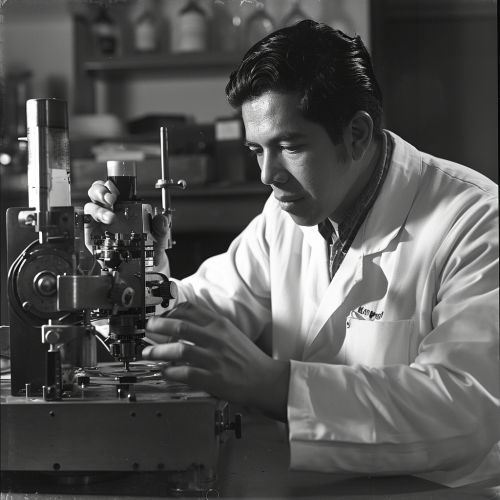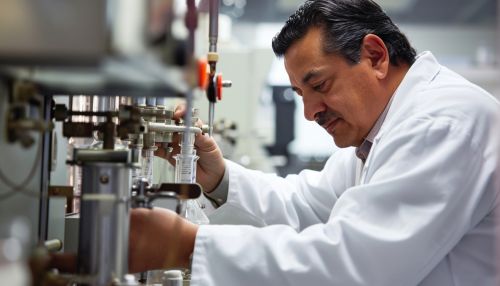Luis Alvarez
Early Life and Education
Luis Walter Alvarez was born on June 13, 1911, in San Francisco, California. He was the second child of Walter C. Alvarez, a physician, and his wife Harriet née Smyth. He attended Madison School in San Francisco from 1918 to 1924, and then San Francisco Polytechnic High School. In 1926, at the age of 15, he entered the University of Chicago, from which he received his Bachelor of Science degree in Physics in 1932. He then moved to the University of California, Berkeley, where he completed his doctorate in 1936 under the supervision of Ernest Orlando Lawrence.
Career and Research
Alvarez joined the University of California Radiation Laboratory, which Lawrence had founded, and became involved in the study of nuclear physics, using the cyclotrons constructed by Lawrence. His work included the discovery of K-capture in 1937, and the discovery of the muon in 1938, for which he was awarded the Nobel Prize in Physics in 1968.
During World War II, Alvarez joined the Manhattan Project's Metallurgical Laboratory at the University of Chicago, where he contributed to the development of the atomic bomb. He later worked on the design of a liquid hydrogen bubble chamber that allowed his team to take millions of photographs of particle interactions, leading to the discovery of resonance states in particle physics.
In the 1980s, Alvarez and his son, geologist Walter Alvarez, proposed the Alvarez hypothesis, suggesting that a large asteroid impact caused the mass extinction of the dinosaurs. This theory was later confirmed by the discovery of the Chicxulub impact crater in Mexico.
Personal Life and Legacy
Alvarez was married twice, first to Geraldine Smithwick in 1936, and then to Janet Landis in 1958. He had two children from his first marriage, Walter and Jean. He died on September 1, 1988, in Berkeley, California.
Alvarez's contributions to physics and his work on the Manhattan Project have had a lasting impact on the field. His development of the liquid hydrogen bubble chamber revolutionized the study of subatomic particles and paved the way for future discoveries in particle physics. His hypothesis about the extinction of the dinosaurs has also had a significant influence on the field of paleontology.


